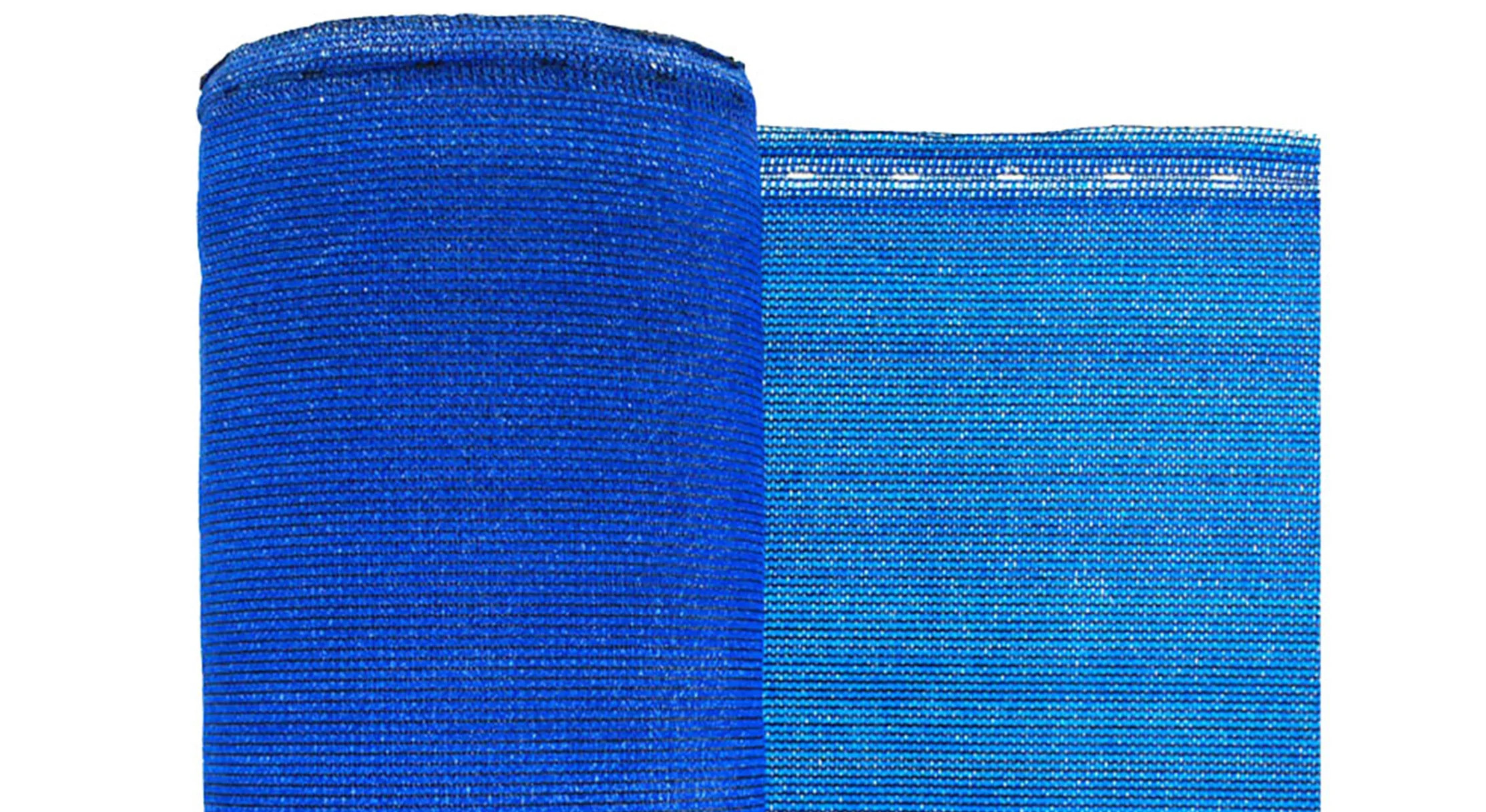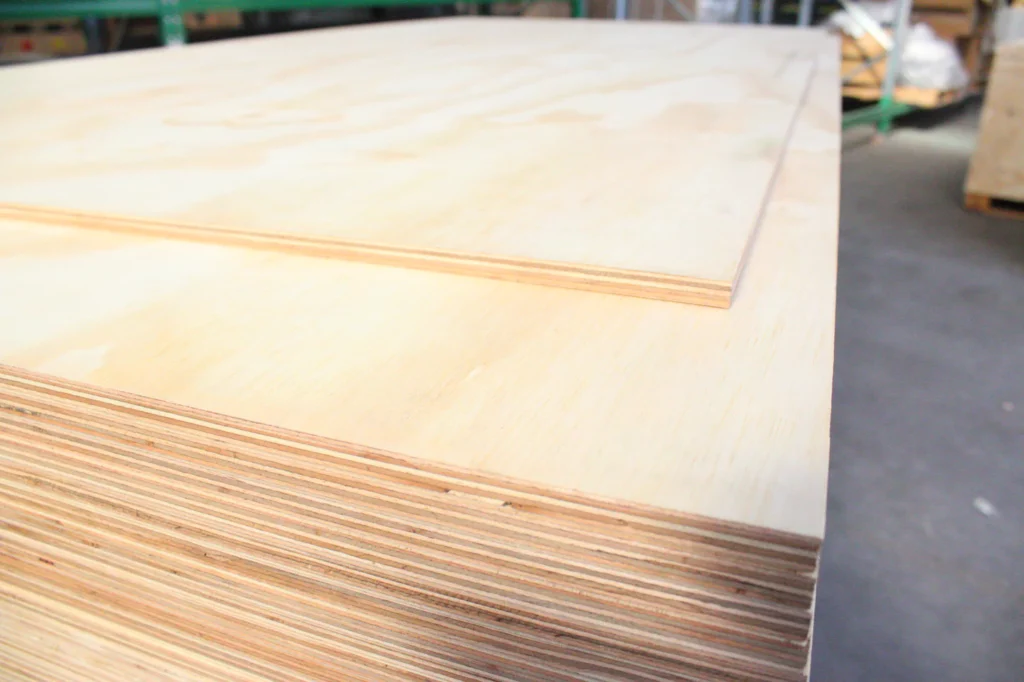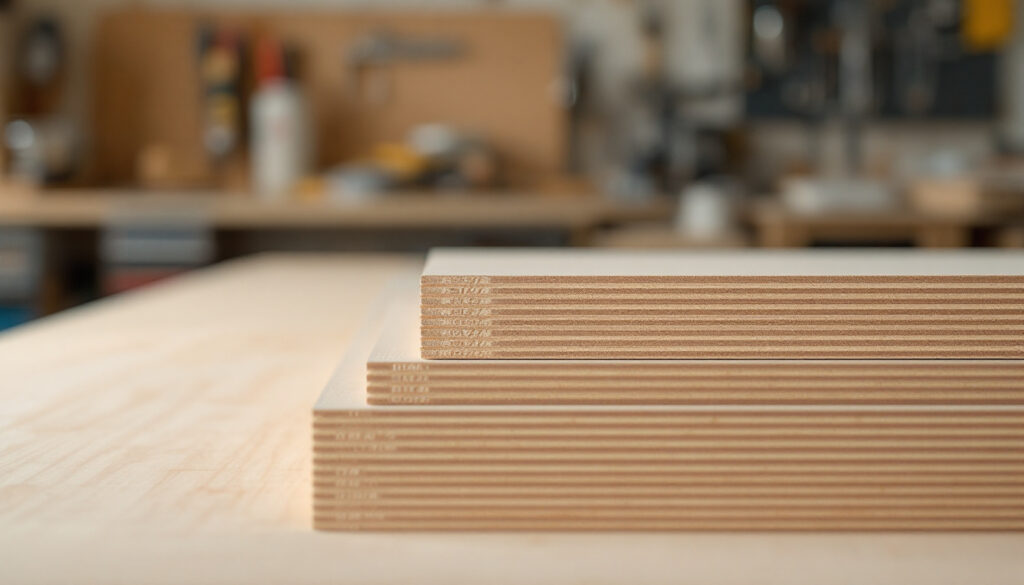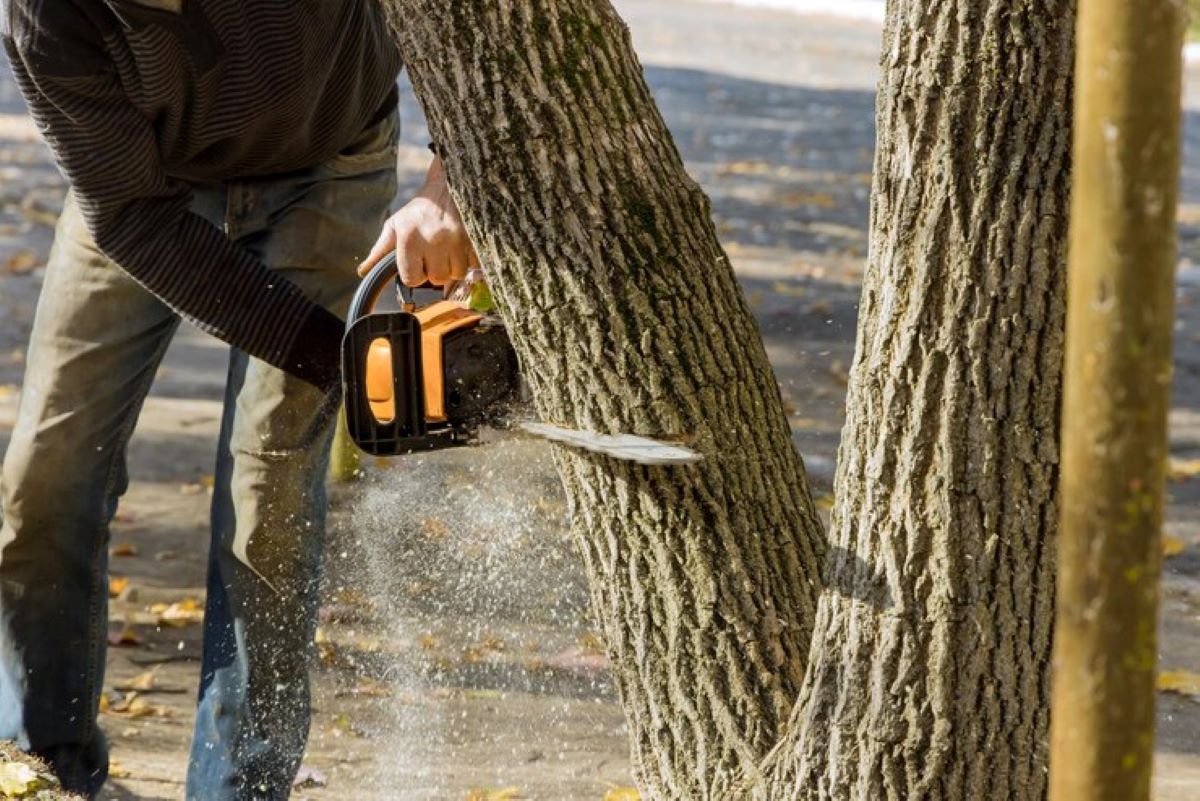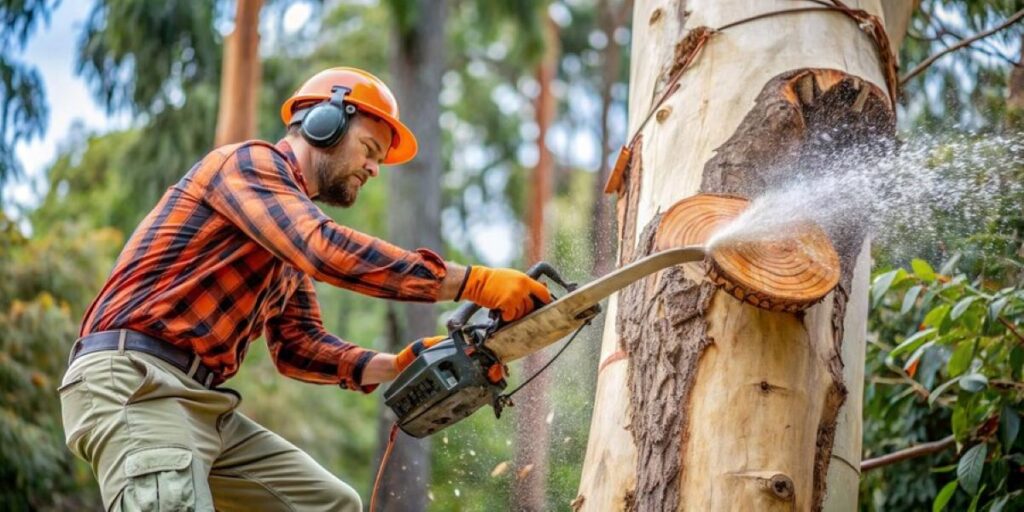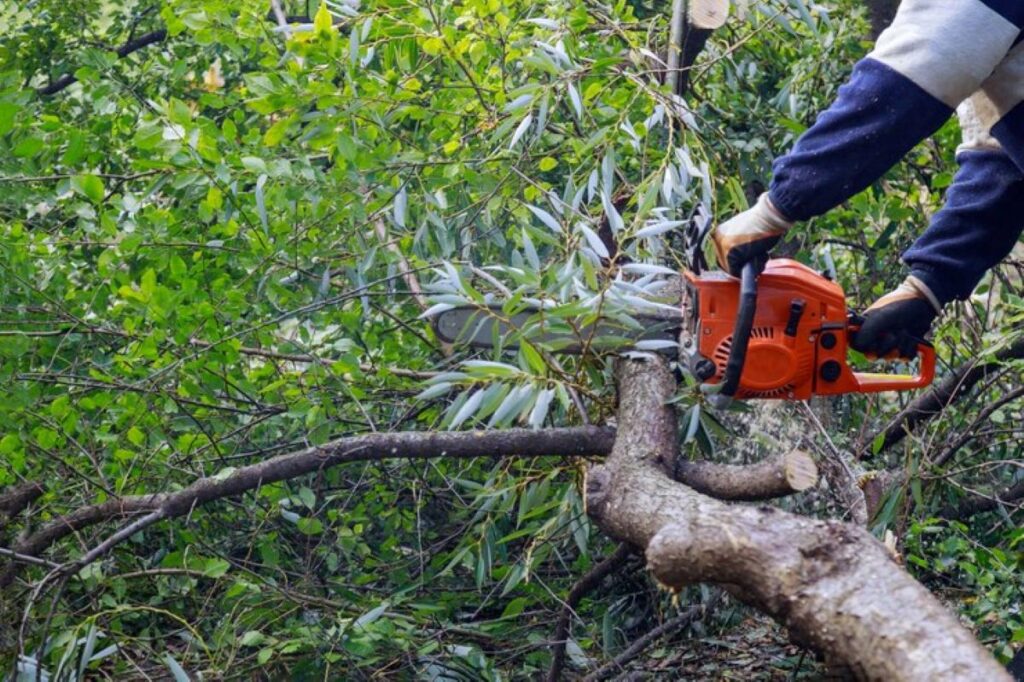What Is Scaffold Mesh and How Is It Used on Construction Sites?
Scaffold mesh is a high-tensile strength safety barrier made from lightweight synthetic materials designed to wrap around scaffolding structures on construction and demolition sites. This protective netting, also known as scaffold containment mesh or scaffold netting, creates a secure enclosure that prevents debris, tools, and materials from falling whilst maintaining adequate visibility for workers.
The material composition of scaffold mesh typically features UV-stabilised polyethylene or polypropylene fibres woven into a durable mesh pattern. This design balances strength with flexibility, allowing the mesh to withstand significant impact forces whilst remaining light enough for a single worker to handle during installation. The weave pattern creates small openings that effectively contain dust particles and small debris whilst permitting airflow to reduce wind loading on the scaffold structure.
Material Properties and Design Features
High-quality scaffold containment mesh incorporates several critical design elements:
- Tensile strength ratings that meet or exceed industry safety standards
- UV-resistant additives that prevent degradation from prolonged sun exposure
- Flame-retardant properties to minimise fire hazards on site
- Colour-coded options for improved site visibility and project identification
- Reinforced edges with rope or tape binding to prevent fraying
The mesh typically comes in standardised widths ranging from 1.8 to 3.6 metres, with custom lengths available to suit specific project requirements. Pre-formed tie points along the edges facilitate quick attachment to scaffold standards and ledgers.
Installation Process on Scaffolding Structures
The installation of scaffold mesh follows a systematic approach that prioritises both security and efficiency. Workers begin by unrolling the mesh from the top of the scaffold structure, allowing gravity to assist with positioning. The mesh extends from the underside of the working deck down to the kickboard level, creating complete coverage of the scaffold face.
Attachment methods include:
- Cable ties threaded through mesh openings and around scaffold tubes
- Bungee cords for temporary installations requiring frequent access
- Purpose-designed clips that grip both mesh and scaffold components
- Rope lashing through reinforced edge loops for permanent installations
Vertical installation between scaffold standards proves particularly effective,
How Does Scaffold Mesh Contain Debris and Prevent Injuries?
Scaffold mesh creates a continuous physical barrier that captures falling objects before they reach ground level. The high-tensile strength material forms a protective envelope around the scaffold structure, intercepting tools, building materials, and construction waste that might otherwise plummet from height.
The Mechanics of Debris Containment
The mesh functions as a catch system through its tightly woven design and strategic installation coverage. When properly installed from the underside of the deck to the kickboard, the material eliminates gaps where objects could escape. The lightweight yet robust construction allows the mesh to absorb the impact of dropped items without tearing or creating secondary hazards.
Construction sites generate numerous falling object risks throughout the workday:
- Hand tools slipping from workers’ grips during overhead tasks
- Offcuts and waste materials pushed or knocked off scaffold platforms
- Fasteners, bolts, and small components dislodged during assembly work
- Dust and particulate matter created by cutting, drilling, or demolishing activities
Each of these construction site hazards poses serious injury potential when falling from elevated work platforms. A hammer dropped from 10 metres can cause fatal injuries to anyone below.
Protection for Ground-Level Personnel
The primary safety benefit targets workers operating beneath scaffolding structures and pedestrians passing near construction perimeters. Falling object prevention through mesh installation reduces struck-by incidents, which consistently rank among the leading causes of construction fatalities and serious injuries.
Ground crews performing tasks below scaffold levels face constant exposure to overhead hazards. The mesh barrier allows these workers to focus on their responsibilities without the distraction of monitoring for falling debris. This psychological safety element improves concentration and reduces stress-related errors.
Pedestrian protection extends beyond the immediate construction workforce. Public footpaths adjacent to building sites, neighbouring properties, and vehicular traffic routes all benefit from the containment system. Sites located in busy urban environments particularly require this level of falling object prevention to protect the general public.
Site Cleanliness and Hazard Management
Debris containment directly influences overall site organisation and hazard control protocols. The mesh prevents scattered materials from accumulating around the scaffold base, reducing trip hazards and maintaining clear access routes for emergency evacuation.
Key cleanliness benefits include:
- Concentrated waste management: With debris contained within designated areas, site supervisors can implement more efficient waste disposal practices.
- Improved housekeeping standards: Regular inspections of the mesh system encourage workers to maintain tidiness within their work zones.
- Enhanced visibility: Clear sightlines around scaffolding promote better communication between team members and reduce potential conflicts with other trades on-site.
By integrating scaffold mesh as part of a comprehensive safety strategy, construction companies can create an environment that prioritises both worker protection and operational efficiency.
How Does Scaffold Mesh Improve Wind Resistance and Scaffold Stability?
Scaffold mesh significantly enhances wind resistance scaffold mesh performance by acting as a controlled barrier that manages wind forces rather than blocking them completely. The mesh design allows controlled air flow through its structure, reducing the sail effect that can destabilise scaffolding during gusty conditions.
Wind Speed Ratings and Performance Standards
Quality scaffold mesh products are engineered to withstand wind speeds up to 100 km/h when properly restrained and installed according to manufacturer specifications. This rating applies to mesh that has been correctly secured to scaffolding standards using appropriate tie points and fixings. The mesh material undergoes rigorous testing to ensure it maintains structural integrity under sustained wind pressure without tearing or detaching from anchor points.
Testing protocols measure both the mesh’s ability to remain attached to scaffolding and its capacity to maintain form without excessive billowing. Sites located in coastal areas or elevated positions benefit particularly from this high wind safety feature, as these locations experience more frequent exposure to strong winds that could compromise unprotected scaffolding structures.
Reducing Wind Impact on Scaffolding Structures
The perforated nature of scaffold mesh creates a critical balance between protection and airflow. Unlike solid barriers that create dangerous wind loading on scaffolding frames, mesh allows approximately 30-40% of wind to pass through its structure. This controlled permeability reduces the lateral forces acting on scaffold standards and ledgers.
When wind strikes a solid surface, it creates pressure that transfers directly to the scaffolding framework. Scaffold mesh dissipates this pressure by:
- Allowing partial wind penetration through the material
- Distributing wind forces across multiple tie points
- Flexing slightly to absorb gusts rather than transferring full force to scaffold components
- Reducing turbulence around scaffold edges where wind acceleration typically occurs
The mesh effectively transforms potentially dangerous wind loads into manageable forces that properly designed scaffolding can safely accommodate. Sites using scaffold mesh report fewer instances of scaffold movement or vibration during windy periods compared to unprotected or solid-clad structures.
For more insights on how to design scaffolds for windy conditions, it’s crucial to consider these factors in your planning stage.
Preventing Scaffold Collapse and Wind-Related Accidents
Scaffold stability depends heavily on managing external forces, with wind being one of the most unpredictable variables on construction sites.
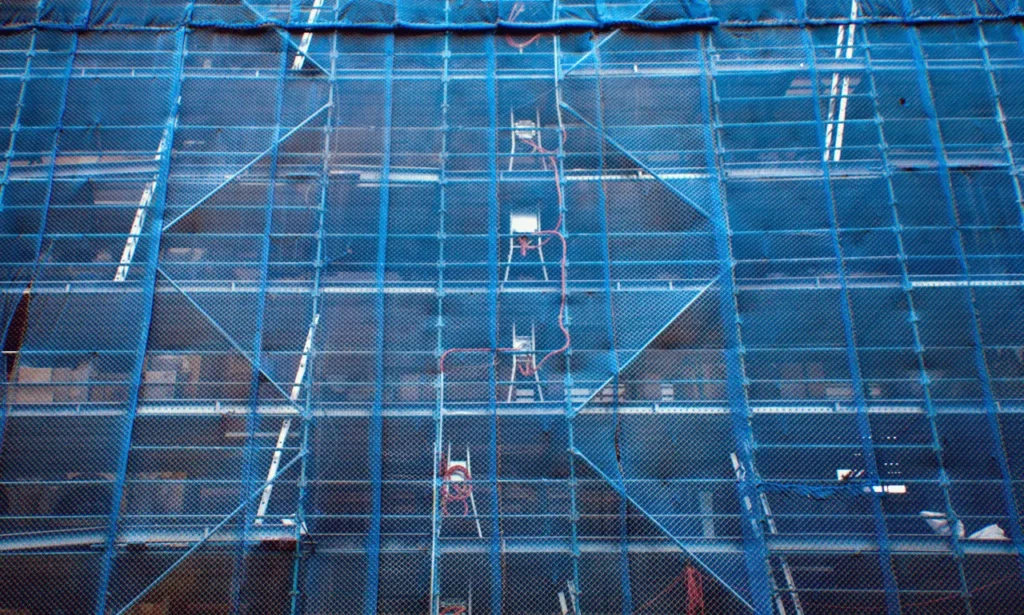
How Does UV Protection Enhance the Durability and Safety of Scaffold Mesh?
UV protection scaffold mesh resists degradation from constant sun exposure, maintaining its structural integrity throughout extended construction projects. The material incorporates UV-stabilised additives that prevent the polymer fibres from breaking down under ultraviolet radiation, ensuring the mesh remains strong and reliable even after months of outdoor use. Learn more about F14 Grade Plywood vs F17 Grade Plywood which is better for Formwork?.
Standard construction materials without UV protection deteriorate rapidly under Australian sun conditions. Unprotected netting can become brittle within weeks, developing weak points that compromise the entire safety barrier. Durability of scaffold netting depends directly on its ability to withstand UV rays, which would otherwise cause the material to fade, crack, and lose tensile strength at an accelerated rate.
Material Science Behind UV Resistance
The UV tolerance properties work at a molecular level to protect scaffold mesh from sun damage. Manufacturers blend UV stabilisers into the polymer during production, creating a shield that absorbs harmful radiation before it can break chemical bonds within the material. This process differs from surface coatings that wear away over time—the protection remains embedded throughout the mesh structure.
High-quality long-lasting safety materials maintain their rated tensile strength even after 12-18 months of continuous UV exposure. Testing protocols subject mesh samples to accelerated weathering conditions equivalent to years of sunlight, verifying that the material retains at least 80% of its original strength. Sites operating in high-UV environments particularly benefit from this enhanced durability, as replacement cycles extend significantly.
Extended Service Life Reduces Safety Risks
UV resistance directly extends the product lifespan on site, reducing the frequency of mesh replacement operations. Projects lasting six months or longer gain substantial advantages from UV-protected mesh, as the material maintains its protective capabilities without requiring mid-project replacement. This continuity eliminates periods when scaffolding stands partially unprotected during changeover operations.
The economic impact proves significant for large-scale projects:
- Reduced material costs from fewer replacements
- Lower labour expenses for installation and removal
- Minimized disruption to ongoing work schedules
- Decreased waste disposal requirements
Maintaining Mesh Integrity Prevents Accidents
Indirect safety benefits from maintaining mesh integrity over time create a compounding protective effect. Degraded mesh develops holes and tears that allow debris
Why Is Visibility Important and How Does Scaffold Mesh Address It?
Visibility on construction sites directly impacts worker safety by enabling personnel to identify hazards, navigate spaces safely, and maintain awareness of their surroundings. Poor visibility creates blind spots where accidents occur, equipment collides, and workers fail to notice falling objects or unstable conditions. Colored scaffold mesh addresses these challenges by providing a semi-transparent barrier that balances protection with adequate light penetration.
The Critical Role of Visibility in Construction Safety
Construction sites operate as dynamic environments where multiple teams work simultaneously at different heights and locations. Workers need clear sightlines to:
- Monitor activities above and below their position
- Identify approaching equipment or materials
- Spot potential hazards before they cause incidents
- Communicate effectively with team members across distances
- Navigate scaffolding structures safely during shift changes
Traditional solid barriers block visibility entirely, creating isolated work zones where workers cannot see beyond their immediate area. This isolation increases accident risk, particularly when materials move vertically through the site or when ground-level personnel need to coordinate with elevated teams.
Color Options and Light Penetration Properties
Scaffold mesh manufacturers produce their products in various colours, each offering specific visibility benefits. The most common options include:
- Orange mesh: High visibility for urban construction sites where the structure needs to stand out against building facades
- Green mesh: Preferred for projects in natural settings or where visual integration with surroundings matters
- White mesh: Maximum light reflection and brightness for enclosed spaces
- Blue mesh: Suitable for corporate or commercial developments requiring professional aesthetics
These coloured scaffold mesh options feature partial UV blockout ratings, typically ranging from 40% to 60%. This design allows sufficient natural light to penetrate the work area whilst still providing protection from direct sun exposure. Workers benefit from well-lit conditions without the harsh glare that causes eye strain and reduces their ability to see clearly.
The mesh weave pattern creates a semi-transparent effect. Personnel on either side of the barrier can detect movement, shapes, and activities through the material. This transparency proves invaluable during crane operations, material deliveries, and coordination between different work crews.
Enhanced Site Awareness Through Strategic Design
The mesh design incorporates small apertures that permit visual communication across the scaffold structure. Supervisors can conduct visual inspections from ground level without needing to ascend scaffolding platforms, ensuring ongoing monitoring of work practices and compliance with safety protocols.
By combining colour selection, light penetration properties, and strategic design elements such as apertures, scaffold mesh enhances visibility on construction sites. This improvement leads to safer working conditions by reducing blind spots, facilitating communication between teams, and enabling proactive identification of hazards.
In an industry where every detail matters in preventing accidents and protecting lives, investing in high-quality scaffold mesh becomes imperative.
How Does the Versatility of Scaffold Mesh Support Different Construction Needs?
Versatile scaffold mesh applications adapt to virtually any construction or demolition scenario, making it an essential safety solution across diverse project types. The mesh performs equally well whether protecting workers during new builds, renovations, or controlled demolitions, eliminating the need for multiple safety products on complex sites.
Meeting the Unique Safety Challenges of Construction and Demolition
Construction projects demand different safety approaches than demolition work, yet scaffold mesh serves both purposes effectively. During construction, the mesh contains materials like mortar, bricks, and tools whilst allowing workers to move freely within the scaffold structure. Demolition sites benefit from the mesh’s ability to capture falling debris, dust, and fragments that pose significant risks to ground-level personnel and the surrounding public.
Customization Options for Site-Specific Requirements
Customizable scaffold netting comes in various dimensions to match specific scaffolding configurations and project scales. Standard sizes typically range from 2.4m to 3.6m in width, though manufacturers can produce bespoke dimensions for unusual scaffold geometries or specialized applications. This flexibility ensures complete coverage without excessive material waste or gaps in protection.
The mesh installs vertically between scaffold standards using integrated tie points, a design feature that simplifies the installation process considerably. Workers can secure the mesh at regular intervals along the scaffold’s height, creating a continuous barrier from ground level to the working platform. These tie points typically space at 300mm to 500mm intervals, providing multiple anchor locations that distribute wind loads evenly across the mesh surface.
Installation Methods Across Different Scaffold Types
Scaffold mesh accommodates various scaffolding systems, including:
- Independent tied scaffolds – mesh wraps around the entire perimeter
- Mobile tower scaffolds – mesh attaches to vertical frames for temporary protection
- Cantilever scaffolds – mesh extends from support points to cover exposed areas
- Suspended scaffolds – mesh hangs from overhead supports on high-rise projects
Single-person installation becomes possible due to the lightweight nature of high-tensile materials. A worker can handle, position, and secure mesh panels without requiring additional crew members, reducing labour costs whilst maintaining safety standards. The mesh typically weighs between 150-200 grams per square metre, light enough for easy manipulation yet strong enough to withstand significant forces.
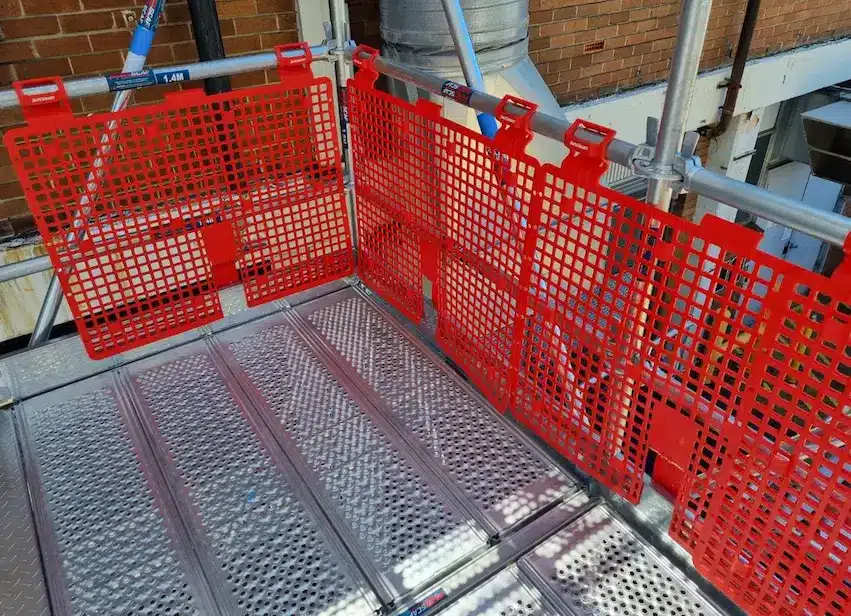
How Does Scaffold Mesh Help Sites Comply With Safety Regulations?
Scaffold mesh helps construction sites meet mandatory safety compliance requirements by adhering to specific government standards for tensile strength, burst resistance, and structural design actions. Quality scaffold mesh products are manufactured to exceed minimum regulatory thresholds, ensuring sites avoid penalties whilst protecting workers and the public.
Meeting Tensile Strength and Burst Resistance Standards
Government standards construction safety regulations specify minimum performance criteria that scaffold mesh must achieve. Tensile strength measures the mesh’s ability to withstand pulling forces without tearing, whilst burst resistance determines how much pressure the material can handle before rupturing. These specifications exist because scaffold mesh serves as a critical safety barrier—failure could result in falling debris, tools, or materials causing serious injury or death.
Reputable scaffold mesh manufacturers test their products against these standards before bringing them to market. The mesh undergoes rigorous laboratory testing where samples are subjected to controlled forces that simulate real-world conditions. Products that pass these tests receive certification confirming they meet or exceed the required thresholds.
Site managers benefit from using certified scaffold mesh because it provides documented proof of compliance during safety inspections. Regulatory authorities can request evidence that safety equipment meets approved standards, and certification documentation serves this purpose. Without proper certification, sites risk:
- Stop-work orders from safety inspectors
- Financial penalties for non-compliance
- Increased liability in the event of accidents
- Damage to company reputation and future tender opportunities
Structural Design Actions and Load Requirements
Safety compliance scaffold mesh must also satisfy structural design action requirements that account for environmental forces acting upon the scaffold system. Wind loads represent the primary concern, as mesh creates a surface area that catches wind. Regulations specify how much wind force the mesh and its attachment system must withstand without failure.
Engineers calculate these loads based on factors including:
- Geographic location and typical wind speeds
- Height of the scaffolding structure
- Mesh surface area and porosity
- Attachment method and spacing of tie points
Scaffold mesh rated for wind speeds up to 100 km/h when properly restrained demonstrates compliance with structural design requirements for most construction environments. The “properly restrained” qualification is critical—the mesh itself may be strong enough, but the attachment system must also meet standards. This includes using appropriate fixings, maintaining correct spacing between tie points, and ensuring secure connections at all joints.
FAQs About Scaffold Mesh on Construction Sites
Scaffold mesh is used as a safety barrier to prevent debris, tools, and materials from falling off scaffolding. It protects workers, pedestrians, and nearby property while also helping maintain site cleanliness and visibility.
Most scaffold mesh products are made from UV-stabilised polyethylene or polypropylene, known for being lightweight yet strong. These materials resist sun damage, tearing, and flame exposure, making them ideal for harsh outdoor conditions.
Scaffold mesh prevents falling objects and debris, which can cause serious injuries or property damage. It also enhances visibility, reduces wind pressure on scaffolds, and keeps the site organized by containing dust and waste materials.
Scaffold mesh is denser and more durable than regular safety netting. It allows airflow while reducing wind load and providing UV protection, whereas standard netting focuses mainly on catching larger debris without offering visibility or wind control.
Installation involves unrolling the mesh from the top of the scaffold and securing it using cable ties, bungee cords, or rope lashing through reinforced edge loops. This ensures full coverage from the working deck to the kickboard level.
Yes. High-quality scaffold mesh is designed to withstand wind speeds up to 100 km/h, depending on proper installation. Its perforated design allows controlled airflow, preventing the “sail effect” that can destabilize scaffolding.

